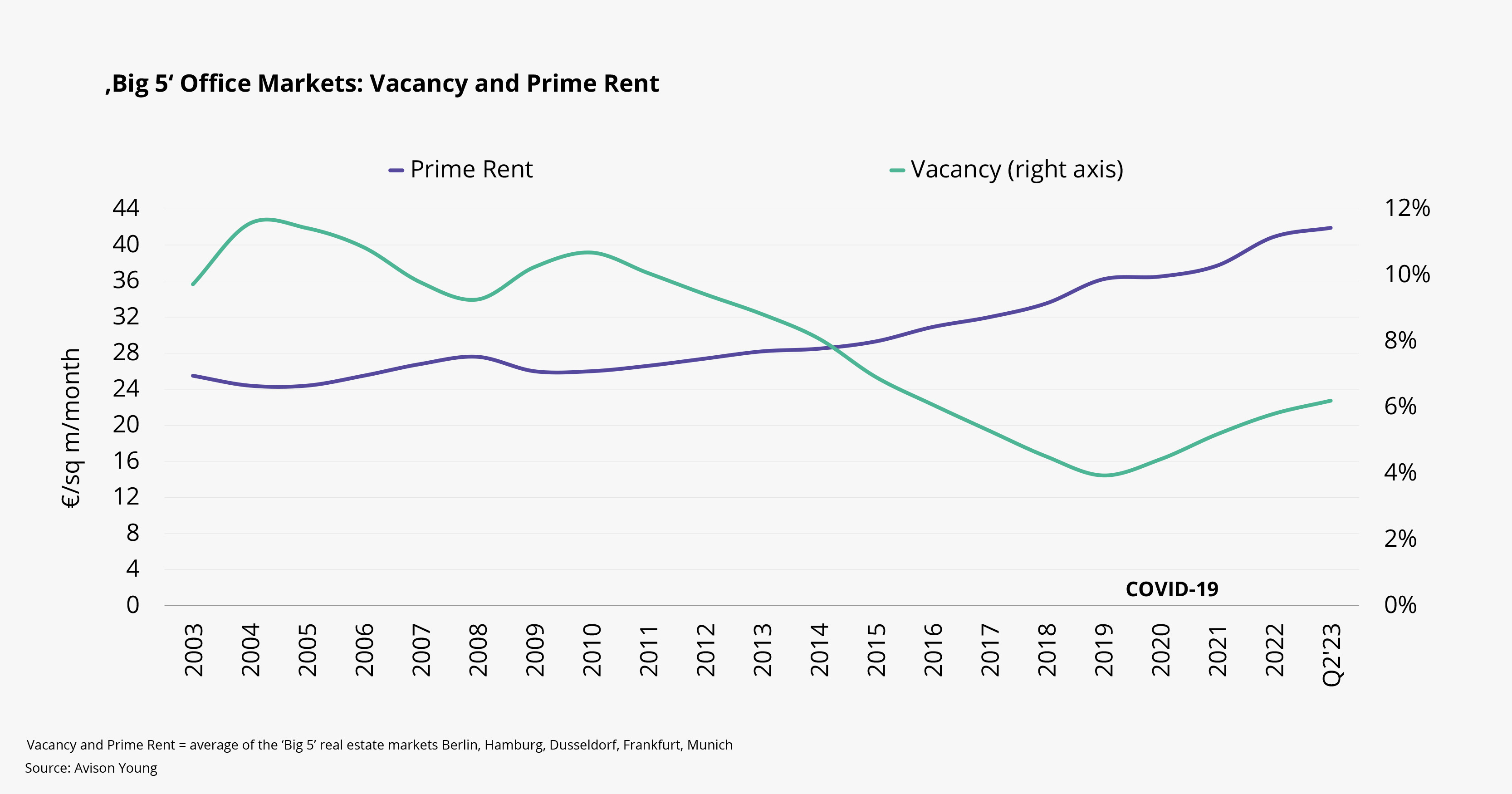Vacancy on the rise - and rents, too

- On the office letting market the contrary development of both indicators had been a „natural law“: As vacancy rises, rents come under pressure – and vice versa. However, since the COVID-19 pandemic, both indicators trended in the same direction. The reason is that even before, only a part of the vacancies were high-quality office spaces in prime locations, but now the quality differentiation has become even more pronounced: on the demand side, tenants have been more cautious for several quarters and initially ask for less space in terms of quantity (partly due to increased hybrid working), while their quality requirements increase (e.g., with regards to meeting ESG criteria). Furthermore, the vacancy rate has been significantly lower for many years than at the two previous turning points in the early 2000s and 2008/2009.
- The portion of office space that meets user requirements is absorbed by the demand, reducing its availability, and in the few remaining spaces the rents rise. However, this only applies to a small portion of office spaces. The vast majority of offices are no longer considered adequate from a user perspective, leading to an increase in vacancy and putting downward pressure on rents.
- This correlation applies not only to the absolute top locations of the five office markets considered here, but also to submarkets that offer good accessibility and a pleasant environment for office employees.
- While the overall vacancy rate is expected to continue rising in all major German office markets, the development of prime rents will be market-specific. It depends, among other factors, on the volume of office space still available in the construction pipeline and how companies will ultimately implement their work concepts - both quantitatively and qualitatively.
07 August 2023
Get market intel
DE-DE-BE Berlin




